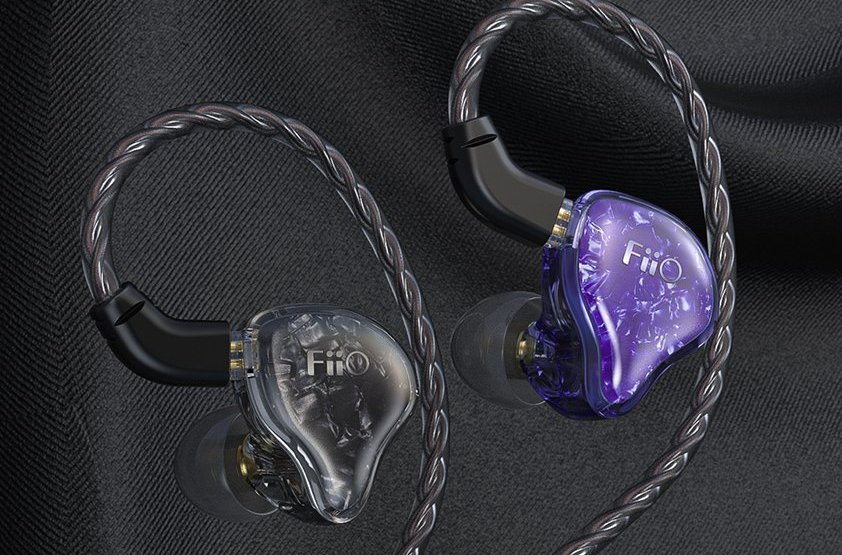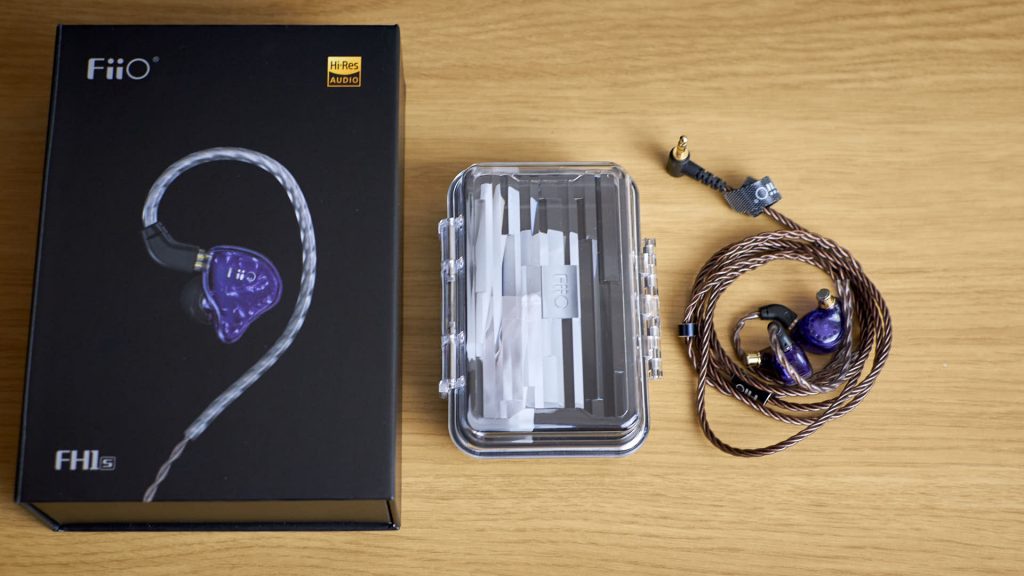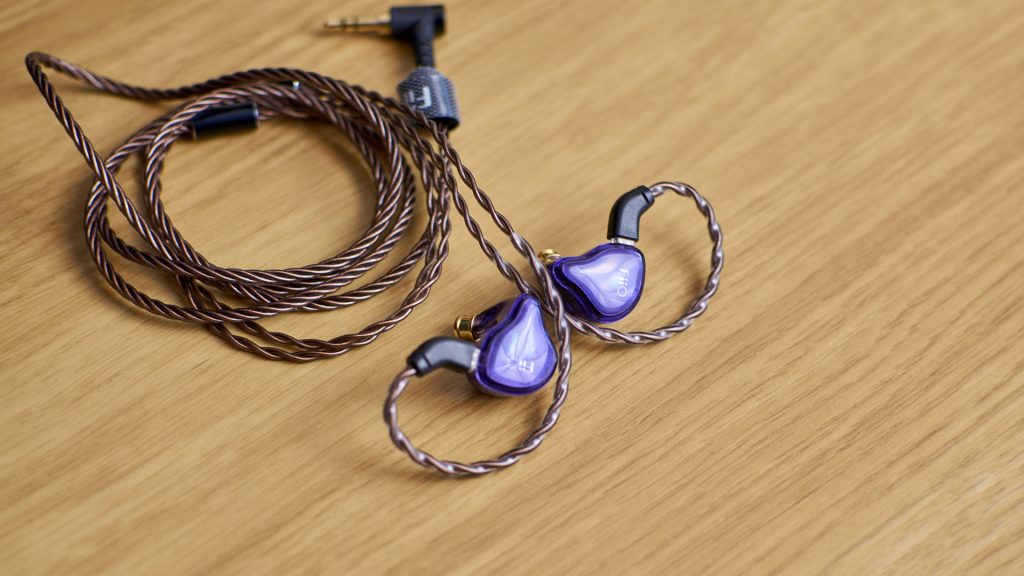Fiio FH1s is the latest entry in Fiio’s rich in-ear portfolio, here to carry the torch instead of the older FH1 model. With the price of 69$, it hits that sweet spot of being affordable, yet managing to offer some interesting technical solutions. Without making this review longer than necessary, let’s dive right into it.
BUILD AND FEATURES
FH1s is mostly made out of plastic but it feels sturdy and lightweight. What’s more important is what’s inside of it. To start with a dynamic driver, it is an unusually large 13.6 mm bio-polymer diaphragm. The size of it alone suggests decent bass output, but there’s yet another driver working along it to create higher frequencies. Knowles 33518 balanced armature driver is located closer to the ear, firing through a brass sound tube. Put together, these drivers create a 26 Ohm impedance while offering a sensitivity of 106 dB/mW.
I didn’t have any problems fitting these in my ears, and I also didn’t find them to be overly fussy about the choice of ear-tips. The factory provided worked just fine for me, but I’ve tried another set of aftermarket silicone tips and a pair of foam ones too. All of these provided a very good fit as well as fairly similar sonic results. The cable itself is of a decent quality too. It is prone to tangling a bit, but on a positive side – it’s not microphonic.
Now we got that out of the way let’s dig into the sound quality talks.
SOUND
The first thing I noticed is that Fiio FH1s is tuned to sound attractive and fun. That starts with the weighty and punchy bass-line that is giving a solid base to any of your tunes. In absolute terms, it might be a bit emphasized but it never feels too prominent due to very good control. Weight and attack go hand in hand to create one of the most enjoying bass-lines I’ve heard from any in-ear model.
Moving up the frequency range, slightly recessed lower midrange is noticeable. At least it feels like that next to a prominent higher midrange. This means that FH1s are not neutral sounding and they have that slight V-shaped tuning. That works well for many types of music, creating an elevated presence with sparkly, sharp sounding notes and edges. Tone texture is also brought up quite nicely.
Unfortunately, there’s a downside to this approach too. First of all, vocals lack a little bit of their natural body and things can sometimes sound overly sharp. Listening to some vocals, especially the female ones, can bring up snake-like sounding sss, hhh, etc. The effect was easily observable in Charlotte Cardin’s “Like It Doesn’t Hurt” for example.
Other than that, FH1s is capable of creating as wide sound-stage as I’ve ever heard from an in-ear model. There’s a real sense of space and separation that makes even busy tracks a joy to listen to.
COMPARISON
Tin Audio T3 – is equally capable in terms of soundstage width, layering, and separation. They even share similar sibilance I don’t appreciate. But the big difference is in the bass region that T3 sourly lacks while FH1s offers in healthy amounts. This makes all the difference, helping FH1s to sound much weightier, funkier, and more exciting… while T3 is just sterile in comparison. Tin Audio T2 is a much better-balanced earphone than T3, but it still lacks some bass grunt and it’s not as spacious sounding as FH1s.
BLON BL-03 – puts a bigger emphasis on the bass region, sounding even meatier. It’s also not as bright and sharp sounding in the upper region which makes for a somewhat L-shaped sound signature. FH1s again leads in terms of spaciousness.
Moondrop Starfield – has a carefully tuned sound signature that is maybe not as exciting at first. However, it offers a more neutral approach with more realistic vocals and tone color that I prefer on a longer run.
SOURCE MATCHING AND EQUALIZING
Due to their sharp and edgy character Fiio FH1s match better with warmer and softer sounding sources. I got a very good result pairing them with Fiio K5 pro. Their overall character was still there, but not as pronounced as with HIDIZS Sonata HD that doesn’t help in taming FH1s’ aggressive top end.
In a few attempts of EQ-ing that edginess out of them, I didn’t really get good results. Problematic vocals kept sounding sibilant even after lowering the 5-10 kHz region by a few dB. Eventually, I killed the sparkle and liveliness of FH1s before I managed to mitigate the problem. It made me realize that you should either accept this edginess as a part of their character or opt for another model altogether.
CONCLUSION
I felt that Fiio FH1s is a fun and exciting listen. The punchy bass, sharp and edgy character made it so. That said, these are not completely neutral nor tame, and it takes a bit of care with pairing to get the best result out of them.
| FIIO FH1S – CHARACTERISTICS |
|
Divers: 13.6 mm dynamic + balanced armature Knowles 33518 |
| FIIO FH1S – CHARACTERISTICS |
|
Divers: 13.6 mm dynamic + balanced armature Knowles 33518 |







